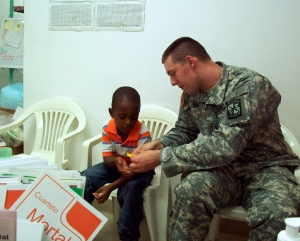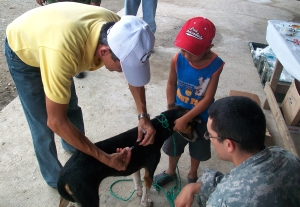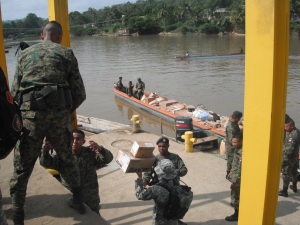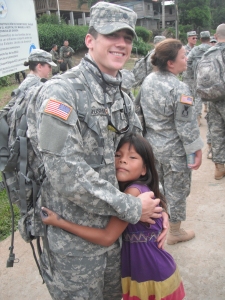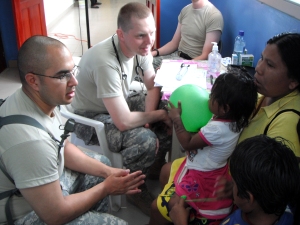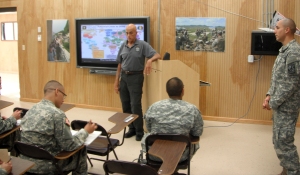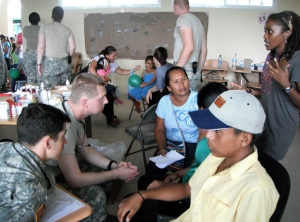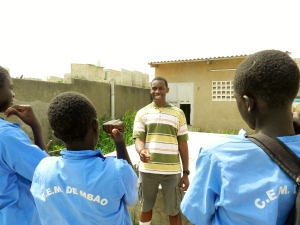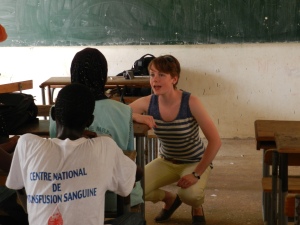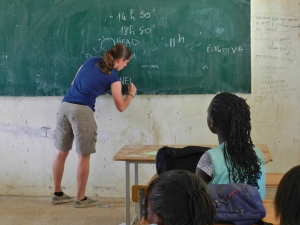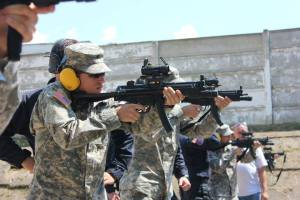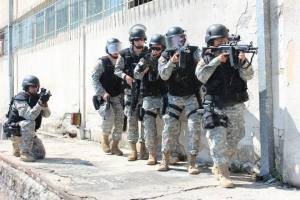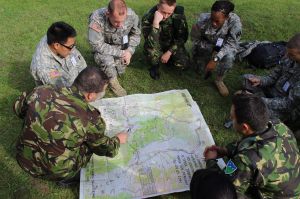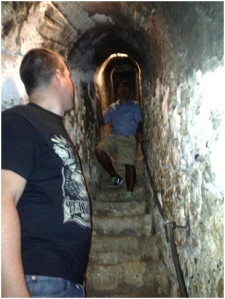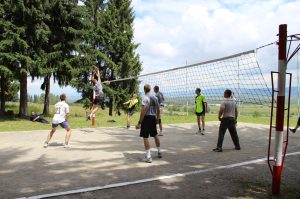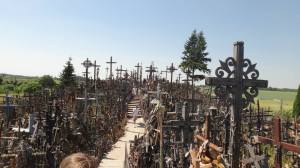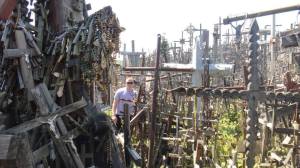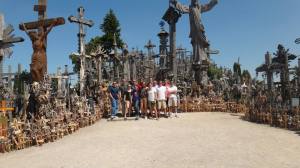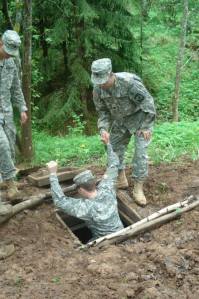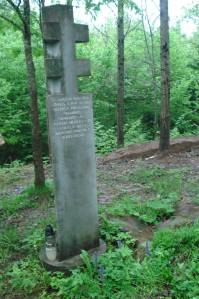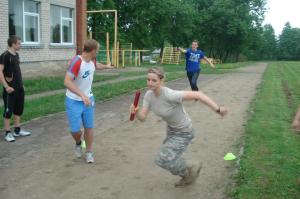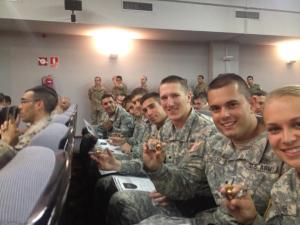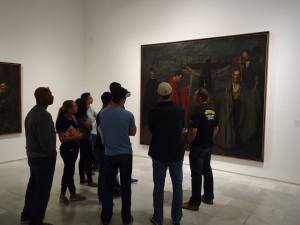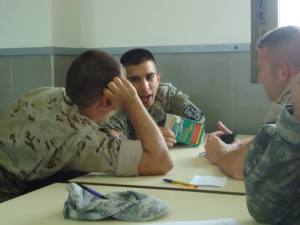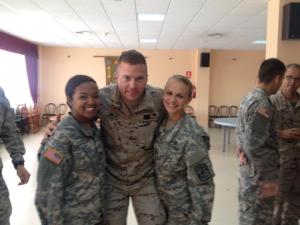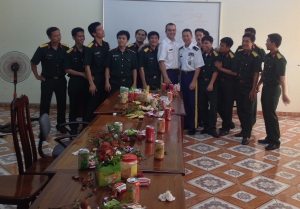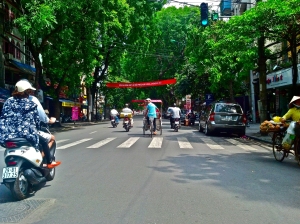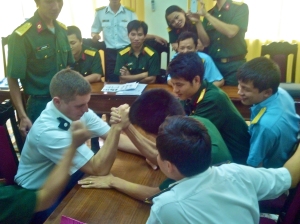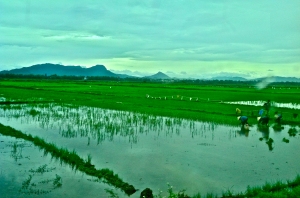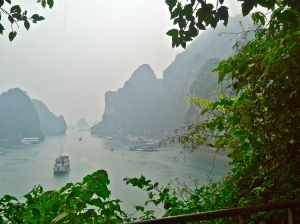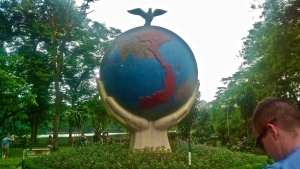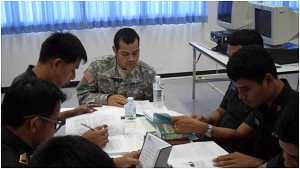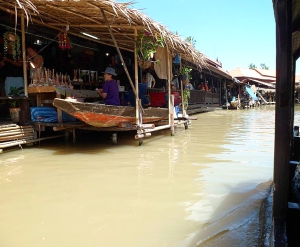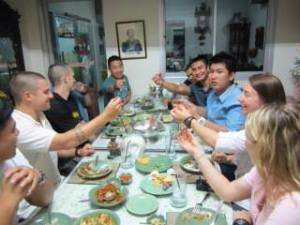Cadets who were proficient in Spanish were sent to Panama on a humanitarian medical mission to act as translators as part of the ROTC Cultural Understanding Language Proficiency program.
Our participation in the medical readiness training exercise in Cañita was an excellent start to our mission in Panama. Approximately 3,000 patients and 4,000 animals were treated over the five days we were there. Patients came from all over to see the doctors–one patient reportedly traveling eight hours by foot and boat to get to the clinic. Some came for a simple checkup and vitamins while others had a common cold or severe back pain. In a few cases patients had serious infections requiring surgical intervention. The medical team was able to care for most health problems which left a good impression on the local population, although some cases required medical beyond the clinic’s capacity.
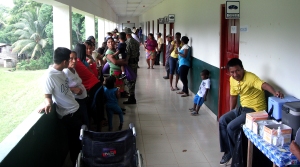
The crowd to visit the different clinics varied in size at any given time, but people came from all over.
The medical team included doctors, nurses, medics, civilian affairs, we were translators, and psychological operations personnel. Each day, doctors attended to patients while the psychological operations team went into surrounding towns to promote the clinic by talking to restaurant owners and posting fliers. We rotated through the different departments to help break the language barrier, improve our Spanish speaking ability, and experience different areas of medicine. At the end of each day, civilian affair personnel updated the Army chain of command on daily operations.
Also supporting the American medical team were local Panamanian doctors, nurses, pharmacists, administrative personnel, and security, adding to the diversity and effectiveness of the group.
Cooperation with the local population was essential to mission success. The local elementary school in Cañita provided our medical team with a location for the clinic and also cooked meals for lunch. Adding the Panamanian medical personnel to our numbers allowed more patients to be seen and when American doctors did not have the tools to deal with a patient, the patients were referred to Panamanian doctors who could provide further help through local hospitals. Also, the local Panamanian police force provided a base of operations and security throughout the entire trip.
Different medical departments in the clinic included general medicine, optometry, dentistry, pharmacy, and veterinary care. General medicine had three rooms because it dealt with the greatest number of patients every day. Doctors in different specialties helped fill in as family practice doctors when the need arose. Optometry was also extremely busy. Many patients suffered from UV damage to their eyes due to the strong sun, resulting in cataracts and turigiums. Three of us were placed in optometry as translators which helped with the heavy patient load.
Additionally, the veterinarians were occupied with daily trips to vaccinate cows and horses on local farms. The pharmacy was open the longest every day because they were filling prescriptions for patients from all departments.
The most common health problems were the flu, fungal infections, constant itching, rashes, intestinal parasites, and insect bites. The common cold is ever present because the humid climate increases the chance of contracting an upper respiratory infection. Fungus was common among Panamanians who work long hours in humid conditions without adequate foot care, just as itching and rashes were common because of insect bites, fungus and allergies.
Another ailment we encountered were intestinal parasites which were widespread due to the lack of potable drinking water in many areas. These problems, if not treated, often lead to more serious problems that are more difficult to deal with Limited access to modern medical care and health insurance coverage in rural areas makes treating simple health problems difficult. The indigenous communities in Panama often have the least access to modern health care and the worst living conditions. As a result, they are more susceptible to diseases that are uncommon in the United States such as scabies and lice.
Our mission in Cañitas was successful because we were able to help provide medical aid to the local population. We were also able to immerse ourselves in the culture of Panama, interact with locals, learn about the cultural norms, and expand our view of the world. Ultimately, we hope the connections made between Panamanians and Cadets will serve as a bridge to foster cooperation and understanding between both countries.


